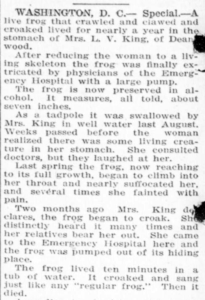“I jumped back,” said Wiggins, still violently ill from the effects of the snake’s poison, “but the snake jumped after me. I tried to grasp it and pitch it from the plane but it coiled and struck me twice before I finally was able to fling it away.”
While Wiggins was engaged in his unique battle with the rattler, the ship hurtled down, out of control. Wiggins [eventually] righted the ship and landed so hastily in a pasture that he almost wrecked the plane.
Farmers took the hapless Wiggins to hospital, where he received treatment and was expected to make a full recovery. It was not established whether the snake had found its own way into the cockpit or been placed there deliberately. It is also unclear if Wiggins quoted Samuel L. Jackson (link NSFW).
Source: Gettysburg Times, August 27th 1930 and others. Content on this page is © Alpha History 2019-23. Content may not be republished without our express permission. For more information please refer to our Terms of Use or contact Alpha History.


